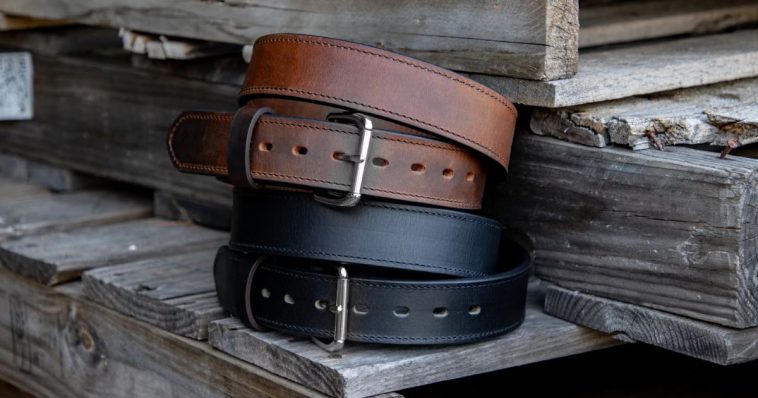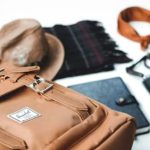Leather belts are a timeless accessory that seamlessly blends function and fashion. Initially created to hold trousers in place, they have evolved into a key element of personal style, symbolising both craftsmanship and versatility. Leather belts enhance any outfit, from formal suits to casual looks, making them a staple in wardrobes worldwide. This article examines the enduring appeal of leather belts, offers guidance on selecting the perfect one, and highlights best practices for their care and maintenance.
The History and Evolution of Leather Belts
The leather belt’s journey from a practical accessory to a fashion statement is rooted in ancient history. Early civilisations, such as the Egyptians, Greeks, and Romans, used belts to secure garments and hold tools or weapons. By the Middle Ages, belts had become increasingly decorative, often indicating status and rank, especially among knights and warriors who used them to secure their weapons. This marked the beginning of leather belts as a symbol of utility and fashion.
Once purely utilitarian, leather belts began strutting into the fashion spotlight in the 19th and early 20th centuries. No longer just tools to keep trousers in check, they started to cinch waists and turn heads, marking their shift from functional gear to bona fide style statements. What began as a necessity slowly became a symbol of personal flair, ushering in the belt’s runway debut in everyday wardrobes.
During the Industrial Revolution, belts became an essential component of men’s and women’s formal wear. With its simple buckle and smooth finish, the classic leather belt became a staple in men’s wardrobes, adding refinement to outfits. By the mid-20th century, leather belts had also gained casual popularity, often paired with denim for a rugged look.
Today, leather belts remain a timeless symbol of expert craftsmanship and refined style, effortlessly bridging tradition with modern flair. They’re no longer just functional but integral to any well-curated wardrobe. From minimalist designs for formal wear to bold statement pieces for casual looks, leather belts remain timeless, bridging the gap between history and modern fashion.
Types of Leather Used in Belts
The type of leather chosen plays a significant role in the belt’s longevity, aesthetics, and price. Here are some of the most common types of leather you’ll find in belts:
Full-Grain Leather
Considered the gold standard, full-grain leather is crafted from the entire hide, including the topmost layer, which preserves its natural, distinctive texture. Over time, it develops a rich patina, enhancing its character and depth. Renowned for its unmatched durability, full-grain leather is perfect for a belt that will last and only improve with age.
Top-grain leather
Slightly more affordable than full-grain leather, it has a smooth finish resulting from the removal of its topmost layer. While it may not age with the same character as full-grain leather, it’s still a durable and attractive option for everyday wear.
Genuine leather
This type is typically made from the layers beneath the top-grain leather. While not as durable or luxurious as full-grain or top-grain leather, it still provides a budget-friendly option for those seeking a leather belt.
Bonded leather
Bonded leather is the least durable type, made from leather scraps bonded together with adhesive. It may look stylish initially, but it doesn’t offer the same longevity as higher-quality leather types. It’s best used for fashion-forward, short-term belts.
How to Choose the Right Leather Belt
Selecting the perfect leather belt involves more than just choosing one that looks appealing; it also requires considering factors such as quality, durability, and style. It’s about striking a balance between style, functionality, and comfort to find the perfect match for your needs. Here are the key factors to keep in mind when picking the ideal leather belt:
Consider the Width
The width of a leather belt plays a significant role in complementing your outfit. Narrow belts (1 to 1.5 inches) are a great choice for formal settings, pairing well with slim-fitting trousers or business attire. They provide a sleek, refined appearance that doesn’t overpower the outfit. Wider belts (1.5 to 2 inches) suit casual looks, offering more personality and a bold statement. However, avoid extensive belts for formal occasions, as they can seem too bulky or out of place with dress pants or suits. The width should always match the occasion and the overall vibe of the outfit.
Choose the Right Colour
Leather belts are available in various colours, but black and brown are the most common and versatile options. Black belts are typically the go-to for formal outfits, especially when paired with suits or dress pants. They offer a clean, professional look and complement dark-colored attire. Brown belts are more versatile and can be worn with casual and semi-formal outfits. Lighter shades of brown are ideal for spring and summer outfits, as they offer a more relaxed feel and pair well with lighter fabrics. Darker shades of brown, on the other hand, lend a more polished, elegant touch, suitable for various occasions, including business casual settings.
Buckle Style
The buckle style is another crucial factor to consider when choosing a leather belt, as it can significantly impact its overall aesthetic and functionality. Classic buckles, like the simple prong buckle or the discreet single-loop design, are ideal for formal and professional settings. They provide a clean, understated look that enhances your outfit without drawing too much attention. Consider larger buckles or custom designs for a more casual or fashion-forward appearance. Statement buckles can be a great way to showcase personal style or add flair to a simple outfit, whether a bold buckle with intricate detailing or a minimalistic design aligns with your outfit’s tone and style.
Quality Over Quantity
Regarding leather belts, think less fast fashion and more forever companion, because quality doesn’t just hold up your pants; it holds up over time. A well-crafted leather belt is more durable and exudes a sense of sophistication that cheap, lower-quality belts can’t match. Opt for a few high-quality leather belts rather than several cheaper ones. A well-made belt, crafted from premium leather, will withstand wear and tear, maintain its shape, and last for many years, making it a more durable and long-term investment. Remember, a high-quality leather belt is more than just an accessory—it’s an investment in style and longevity.
By considering these considerations, choosing the right leather belt becomes an intentional and rewarding process that enhances your wardrobe and overall look.
Styling Leather Belts for Every Occasion
A leather belt isn’t just an accessory—it’s the quiet hero of your wardrobe, effortlessly pulling together looks from casual to classy. Here’s how to style it like a pro for any occasion:
For Business/Formal Wear
Pair a sleek, black leather belt with a well-tailored suit or dress trousers. The strap should be slim, and the clasp should be understated and simple to preserve a polished appearance. Leather belts in dark brown or black are most suitable for corporate environments.
For Casual Wear
Opt for a leather belt with character—think a wider buckle and a hint of rugged charm. Brown is your go-to wingman, effortlessly matching everything from worn-in jeans to laid-back chinos. Feeling summery? Swap in a tan or light brown belt to keep the mood light and easy. Top it off with a crisp shirt or casual jacket; you’ve nailed smart-casual without trying.
For Smart-Casual
A leather belt can seamlessly transition from formal to a smart-casual look. Opt for a medium-width belt in either brown or black and pair it with chinos, a blazer, and loafers for an effortlessly chic look.
For a Rugged, Outdoor Style
For a more rugged or casual outdoor look, a wider, more durable leather belt with a larger buckle pairs perfectly with denim jackets, flannel shirts, or cargo pants. The style exudes a confident, laid-back vibe—effortlessly cool and self-assured.
How to Care for Leather Belts
A well-maintained leather belt can last for years, but like all leather accessories, it requires regular attention to maintain its top condition. Follow these simple care tips to ensure your belt remains as stylish and durable as the day you bought it:
Clean Regularly
Leather straps are prone to accumulating dirt and dust over time. To maintain a sleek look, gently wipe the strap with a soft, moist cloth to remove surface debris and keep it immaculate. Be gentle—avoid soaking the belt in water, as excessive moisture can cause the leather to become stiff or damaged. For tougher stains, use a leather cleaner specifically made for the material, but be sure to test it on a small, inconspicuous area first.
Keep It Supple
Leather may be tough, but it’s a diva when it comes to care. It can dry out, crack, and lose charm without a little TLC. Show it some love with a good leather conditioner every few months—think of it like a spa day for your belt. A light touch with a soft cloth is all you need to replenish its natural oils, keeping it smooth, flexible, and gleaming with that signature sheen. Let it soak in the goodness before tucking it away like the wardrobe MVP.
Store Carefully
Correct storage is essential for maintaining the shape and quality of your leather belt when it’s not in use. Store your leather strap in a cool, dry area, away from direct sunlight, to protect its integrity. To maintain its shape, hang it on a belt rack or hook, preventing unwanted creases or bends. If hanging isn’t feasible, loosely roll the belt to avoid distortion.
Rotate Belts
Leather is durable, but constant wear can cause it to lose its charm. To maximise the longevity of a leather belt, consider rotating between a few different styles, allowing each one to rest and maintain its shape. Wearing the same belt daily can lead to uneven wear and tear, making it prone to stretching and scuffing. Switching between belts allows each one to rest, which keeps them looking their best for a longer period.
By following these simple steps, a leather belt can retain its beauty and functionality, ensuring it remains a timeless accessory in your wardrobe for years to come.
The Lasting Appeal of Leather Belts
Leather belts are timeless accessories that play a vital role in fashion. They combine style, functionality, and versatility, seamlessly enhancing a wide range of outfits. A leather belt can become an enduring staple in any wardrobe by selecting the right leather, properly caring for it, and pairing it with the appropriate attire. A well-chosen belt effortlessly enhances your style, elevating your look with minimal effort.



